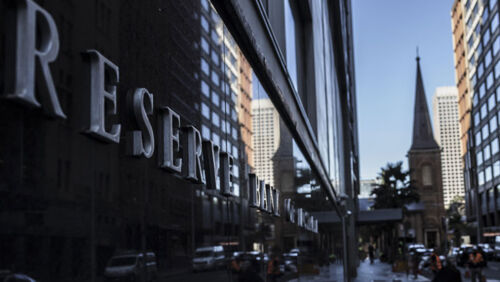Reserve Bank lifts cash rate to 2.85%
By Tom Watson
Australia's Reserve Bank has decided to lift interest rates by a further 25 basis points at its November board meeting, bringing the official cash rate to 2.85% - the highest it's been since April 2013.
The decision marks a seventh straight increase from the RBA, which has embarked on a rapid rate lifting exercise since May in an attempt to curtail inflation, during which time the cash rate has risen by 275 basis points.
"As is the case in most countries, inflation in Australia is too high," says Reserve Bank governor, Philip Lowe.
"Over the year to September, the CPI inflation rate was 7.3 per cent, the highest it has been in more than three decades. Global factors explain much of this high inflation, but strong domestic demand relative to the ability of the economy to meet that demand is also playing a role.
"The Board has increased interest rates materially since May. This has been necessary to establish a more sustainable balance of demand and supply in the Australian economy to help return inflation to target."
Given the higher than anticipated Consumer Price Index (CPI) figure released last week, today's decision from the Reserve Bank was rated as being a near inevitability.
In fact, all bar one of the 39 economists and experts surveyed by comparison website Finder before the meeting expected a rate rise. One of those, associate professor of economics at the University of Sydney, Mark Melatos, says that we are likely to see the central bank move again in the short-term given the current inflation situation.
"Inflation is significantly above the RBA's target band and likely to increase further, notwithstanding declining oil prices and an increasing risk of global recession. Like most central banks, the RBA was slow to recognise the inflation threat and its policy settings need to catch-up to the inflation reality.
"Moreover, the RBA's hand is likely to be forced by increasingly aggressive tightening by other central banks. This means the cash rate will likely need to be raised steadily in the near future with a likely pause from mid-2023 as the RBA assesses the impact of its tightening strategy."
Hikes add to household pressure
With inflation continuing to bite across everything from energy to grocery prices, the unfortunate reality for households with a mortgage is that their budgets will likely be stretched even further once banks and lenders pass on today's rate increase.
Graham Cooke, head of consumer research at Finder, notes that the latest increase will add hundreds of dollars each year to a typical borrowers' mortgage repayments.
"This seventh consecutive rate hike - 275 basis points in total - will be a bitter pill to swallow for many. The current series of rate hikes has added almost $10,000 to the annual cost of a $500,000 mortgage."
Here's a look at how a 25-basis-point increase to the average variable rate for owner occupiers in Finder's database (currently 5.95%) would impact a borrowers monthly repayments.
| Loan size | New monthly repayments | Monthly increase |
| $200,000 | $1,457 | $29 |
| $400,000 | $2,913 | $58 |
| $600,000 | $4,369 | $87 |
| $800,000 | $5,825 | $116 |
| $1,000,000 | $7,281 | $145 |
Of course, as repayments rise higher, so too will the proportion of homeowners who will struggle to meet them.
In research released last week, Roy Morgan estimated that 948,000 mortgage holders (21.1% of the total) were 'at risk' of mortgage stress in the three months to September - an increase of almost 100,000 on the previous quarter's figures.
While the number of at risk mortgage holders is still below the 15-year average (22.7%), Roy Morgan forecasts that the October and November rates rises, plus another possible hike in December, could result in over a quarter of mortgage holders falling into the at-risk category by the end of the year.
"Modelling by Roy Morgan shows that with two additional interest rates increases of +0.25% in both November and December the number of mortgage holders considered 'At Risk' would rise by 203,000 to 1.15 million (26.2%) - the highest since for over a decade since April 2012," says Roy Morgan chief executive, Michele Levine.
"Of more concern is the rise in those mortgage holders considered 'Extremely At Risk', now estimated at 611,000 (14.1%) in September 2022 - the highest since May 2019."
Whether or not the Reserve Bank does make it eight interest rate hikes in a row will be known when the board next meets on December 6 - the final meeting of the year and the last until February 2023.
Get stories like this in our newsletters.



